11 Best WiFi Repeaters More Perfect Signal
Wired internet has become obsolete in most households. Today, most people surf the web wirelessly via WLAN. But in large apartments, especially in old buildings with thick walls, it can happen that the signal strength of the WLAN router is not enough to ensure good reception in every room of the apartment. Then the best WiFi repeater can help. It is a compact device that amplifies the WLAN signal i.e. increases the range. This can be useful not only in large apartments. A repeater can also ensure better WiFi reception in commercial areas or in parks.
The following comparison of WLAN repeaters describes the properties, functions and special features of the 11 best WiFi repeaters. This guide provides information on what there is to know about this device and the most important purchasing criteria, provides tips on how to use it properly and provides answers to common questions.
11 best and popular WiFi repeaters in big comparison
1. AVM FRITZ! 3000 WiFi Repeaters
- Dimensions of the item W x W x H 8.8 x 18.4 x 13.6 centimeters
- Item weight 0.64 kilograms
- Data transfer rate of 2999 megabits per second
- 802.11n . Wireless Type
AVM FRITZ! The 3000 WLAN repeaters work with tri-band technology in the 2.4 and 5 gigahertz (GHz) bands and achieve maximum data rates of up to 1,733 megabits (Mbps) per second. Thanks to the support of MU-MIMO the repeater allows simultaneous supply of multiple target devices. To reduce transmission speed loss, the WLAN repeater of the AVM works with crossband repetition. That means he changes the radio channel on the radio network to maintain the speed of data transmission.
What are the 2.4 and 5 gigahertz bands? The frequency band is part of the electromagnetic spectrum and ensures that the signal is not interfered with by other radio signals during radio transmission over WLAN. There are two frequency bands for transmitting WLAN signals - the 2.4 and 5 gigahertz bands. A number of channels are available for both frequency bands. The 2.4 gigahertz band uses channels 1 through 13, the 5 gigahertz (GHz) band uses channels 36 through 64 and 100 to 140 for transmission power. The 2.4 GHz frequency band has a longer range. But distractions are more common because they are used by most devices - and also by those closest to them, for example in homes with multiple tenants. A maximum of three non-overlapping channels. Although the 5 GHz frequency band offers a shorter range, it has a higher transmission rate. In addition, it is less busy and therefore less prone to distractions. It works on 19 channels without overlapping and is perfect for streaming and downloading.
AVM FRITZ! 3000 is equipped with two LAN ports. Repeater supports WiFi mesh: According to the manufacturer, some repeaters are FRITZ! WiFi can be combined to form a smart WiFi network/home network. In this way, greater WLAN coverage can be achieved. Equipped with an LED signal strength indicator, the repeater makes it easy to find a suitable parking space. According to the manufacturer, it is easy to use and can be updated.
Average power consumption 6 watts - maximum 11.4 watts. AVM FRITZ! The 3000 has a white rectangular design that is divided into two legs at the bottom.
Advantages
- Two LAN ports
- Wi-Fi Network
- Up to 1,733 megabits over WLAN per second
Deficiency
- Requires relatively large space
2. AVM FRITZ! 600 WiFi Repeaters
- Dimensions of the item W x W x H 63 x 63 x 30 centimeters
- Item weight 0.14 kilograms
- Data transfer rate of 600 megabits per second
- 802.11b . Wireless Type
AVM FRITZ! 600 WiFi repeater works in the 2.4 gigahertz band with a maximum data transfer rate of 600 megabits per second. It uses the WLAN N standard, also known as 802.11n or Wi-Fi 4, and, according to the manufacturer, offers easy WLAN setup via the WPS button - WPS stands for Wi-Fi Protected Setup. According to the AVM, the WLAN repeater offers secure WLAN encryption at the factory and supports the IPv6 Internet protocol. The repeater must be able to be installed unobtrusively in any socket in the house.
With WLAN mesh support: AVM FRITZ! 600 WiFi Repeater allows multiple FRITZ! The repeater is connected in the network thanks to the WiFi mesh support to achieve greater WiFi coverage in the mesh network.
The WLAN repeater has the FRITZ!OS operating system with free updates according to the manufacturer and has an LED housing on the top which is meant to help determine the best position. Alternatively, an AVM application can be used for this. According to the manufacturer, the repeater does not have a LAN connection, but supports WPA and WPA2 encryption.
What is the role of the WLAN standard of the repeater? The WLAN standard largely determines the data transmission speed. A repeater must at least support the IEE 802.11 ac radio standard. The 802.11 standard, first introduced in 1997, regulates the flow of data in wireless computer networks and has been fundamentally revised several times. In Germany, the network technology is called WLAN, while the term Wi-Fi is used in English-speaking countries. The 802.11 numeric sequence indicates the radio standard, the letter combination behind the version. In 2018, the combination of numbers and letters was replaced with the abbreviation "Wi-Fi" plus a number. Wi-Fi-4 is 802.11n compliant, Wi-Fi-5 is 802.11ac, the successor to current 802.11ax is called Wi-Fi-6. The more up-to-date the standard, the higher the possible data transmission rates in the WLAN. Important to know: The WLAN standard is backward compatible. That means a repeater with a standard 2.4 gigahertz can be connected to a 5 gigahertz router. Surfing speed on the network is reduced to the maximum data throughput of devices with lower WLAN standards. A list of WLAN standards including maximum data rates can be found in the following guide in the WLAN standards and frequency bands section.
Advantages
- Very small as adapter for socket
- Easy setup via app or WPS button
Deficiency
- No LAN connection
- No 5 gigahertz dukungan support
3. TP Link TL WA850RE WiFi Repeater
- Wireless connectivity technology
- Compatible devices WiFi devices
- Voice control method
- Dual-band class frequency band
- Microsoft Windows 98SE, NT, 2000, XP, Vista or Windows 7, 8, 10, Mac OS, NetWare, UNIX or Linux Operating Systems.
- Wireless Type 802.11n, 802.11b, 802.11a, 802.11g
- WPS security protocol
- Baglantı Noktası Sayısı 1
- LAN port bandwidth 10/100 megabits per second
The compact TP Link TL WA850RE WiFi repeater plugs directly into a wall outlet and achieves transmission speeds of up to 300 megabits in the 2.4 gigahertz band with WiFi standard IEEE802.11b/g/n (Mbps) per second. To avoid speed loss in the quality of WLAN signal transmission, the repeater works with crossband repeat technology.
To make it easier to find a suitable location, the device is equipped with an LED light that indicates signal strength. The repeater has a LAN port for connecting to devices that do not support WLAN. Data is transmitted using the WPA2 encryption standard. According to the manufacturer, users can easily order repeaters and manage them easily using the Tether smartphone app.
The TP Link WiFi repeater has a white design with rounded edges and a circular blue LED light in the bottom right corner. It measures 7.5 x 6.5 x 11.0 centimeters (width x depth x height).
Advantages
- Direct connection for socket
- LAN ports
- Management via app
Deficiency
- No 5 gigahertz dukungan support
4. TP Link RE200 WiFi Repeater
- Ethernet hardware interface
- Microsoft Windows 98SE, NT, 2000, XP, Vista or Windows 7, 8, 10, Mac OS, NetWare, UNIX or Linux operating systems.
- Smartphone compatible devices
- Dimensions of the item W x W x H 11 x 6.6 x 7.5 centimeters
- Data transfer rate of 433 megabits per second
- Item weight 0.11 kilograms
The TP Link RE200 is a compact WiFi repeater that plugs directly into a wall outlet. It has dual band functionality and works in the 2.4 gigahertz and 5 gigahertz bands. The repeater supports the IEEE802.11ac/a/b/g/n WLAN standard and achieves a maximum transmission speed of 750 megabits per second. According to the manufacturer, the connection to the router is carried out without much effort using the WPS button. This repeater is suitable for HD video streaming, online gaming, and other applications that require a fast internet connection.
The TP Link RE200 is equipped with a LAN port that allows connection to devices that do not support WLAN. According to the manufacturer, the operation and management of the repeater is not complicated with the tether application. The use of mesh WLANs makes it possible to use multiple identical WLAN amplifiers in the network. The TP Link RE200 is completely white and features a checkerboard pattern on the front. There is a green LED light in the lower right corner which indicates the signal strength. The repeater measures 7.5 x 6.5 x 11.0 centimeters (width x depth x height).
What is a WPS button? The WPS button allows connections between repeaters and routers to be made quickly and easily. First the router button is pressed. By pressing the WPS button on the repeater, the connection between the two devices is established automatically without having to do any manual settings. This is the easiest way to connect WiFi devices to each other.
Advantages
- Dual band with 2.4 and 5 gigahertz
- Direct for socket
- Mesh support
Deficiency
- High enough
5. AVM FRITZ! 2400 WiFi Repeaters
- Dimensions of the item W x W x H 6.3 x 7.6 x 15.5 centimeters
- Item weight 0.18 kilograms
- Data transfer rate of 2333 megabits per second
AVM FRITZ! 2400 WiFi repeater works in the 2.4 and 5 gigahertz bands. The compact device can be plugged directly into the socket. It supports the IEEE802.11ac/n WLAN standard and achieves a maximum data rate of up to 1,733 megabits per second. Thanks to crossband repeat technology, the repeater automatically selects the best radio channel on the radio network to avoid reducing surfing speed while the device is transmitting.
The WLAN repeater from AVM is equipped with a LAN connection to connect to devices that do not support WLAN and transmit data using the WAP2 encryption protocol. Mesh WiFi support makes it possible to use multiple Fritz repeaters! in the network. The repeater is renewable, can be operated easily via the app and is equipped with an LED signal strength indicator.
FRITZ AVM! The 2400 has a white front panel with a red "connect" button. The back of the repeater is gray. The device measures 7.6 × 6.2 x 15.5 centimeters (width x depth x height).
Advantages
- Dual band support
- 1,733 megabits per second over WLAN
- LAN ports
Deficiency
- No recognizable flaws
6. NETGEAR EX6120 WiFi Repeater
- Dimensions of the item W x W x H 5.5 x 6.7 x 3.9 centimeters
- Compatible Devices Wifi Devices
- Item weight 293 grams
- Span 60 square meters
The NETGEAR EX6120 is a small plug-in wireless repeater. It works in the 2.4 and 5 gigahertz bands, so it has dual-band functionality. According to the manufacturer, it achieves high surfing speeds with the so-called FastLane technology. The device supports the IEEE802.11ac/b/g/n WLAN standard and allows data rates of up to 1,200 megabits per second. Connection to the router can be easily made via the WPS button. WLAN repeaters offer MU-MIMO support. This allows it to connect multiple target devices to the internet at the same time.
With the Netgear Analytics App: Device buyers get access to the Netgear Analytics App. The smartphone application is not only used to operate the repeater, it also allows the WiFi connection to be analyzed.
The NETGEAR EX6120 has a LAN port for connecting to non-WLAN devices and, according to the provider, can be set up in 5 minutes. For better reception, the compact repeater is equipped with two externally mounted, adjustable antennas. The device is gray and measures 5.5 × 3.9 x 6.7 centimeters (width x depth x height).
Advantages
- Double band function
- Up to 1,200 megabits per second
- Analysis function via app
- LAN ports
Deficiency
- Side antenna takes up space
7. TP-Link RE330 WiFi Repeater
According to the manufacturer, the TP-Link RE330 WiFi repeater works with dual-band technology in the 2.4 and 5 gigahertz bands. It achieves maximum data rates of up to 300 megabits per second in the 2.4 gigahertz band and speeds of up to 867 megabits per second in the 5 gigahertz band. Thanks to MU-MIMO support according to TP-Link, the repeater allows simultaneous supply of up to 32 target devices. The WiFi extender has an integrated WPS button for easy installation and a handy signal strength indicator, which TP-Link says helps with optimal repeater placement.
With app control: According to the manufacturer, the TP-Link RE330 WiFi repeater allows easy control and management via the tether app from TP-Link or the Web UI.
According to the manufacturer, the WiFi repeater has a built-in access point mode to extend the wired network and is said to be compatible with all WiFi devices. According to the manufacturer, so-called adaptive path selection helps ensure that the network is always running at the highest possible speed. The WiFi repeater has an integrated LAN port, is OneMesh compatible and supports WPA and WPA2. Unlike many models on the market, the socket is not integrated.
Advantages
- Net compatible
- Double band mode
- LAN ports
Deficiency
- Relatively slow
8. STRONG 750 . WiFi Repeater
The STRONG 750 WiFi repeater works with dual-band support in the 2.4 and 5 gigahertz bands. With the IEEE 802.11 ac WLAN standard, it achieves transmission speeds of up to 750 megabits per second. The repeater supports crossband repeats and transmits data using the WPA2 encryption protocol. The LED display shows the signal strength and thus helps find a suitable location.
With three antennas: For better reception, the WiFi repeater from STRONG is equipped with three adjustable external antennas.
The STRONG 750 has two LAN ports for connecting devices that do not support WLAN to the Internet. According to the manufacturer, the repeater works with any standard router or modem. A power adapter is not required to operate the device; it can be plugged directly into the socket. The STRONG WiFi repeater is completely white and has a square design. It measures 8.0 × 7.2 × 16.4 centimeters (width x depth x height).
Advantages
- Double band mode
- Two LAN ports
Deficiency
- Huge design due to three antennas
9. Devolo AC WiFi Repeater
- Item dimensions L x W x H 19 x 8.1 x 11.5 centimetres
- Compatible devices smartphones, tablets, laptops
- Item weight 0.24 kilograms
- Data transfer rate 1000 megabits per second
The Devolo AC works in the 2.4 and 5 gigahertz bands. Supports the IEEE 802.11 ac/n/g/b/a WLAN standard and transmits data rates up to 1,200 megabits (Mbps) per second. Equipped with a five-level LED display, the repeater signals the signal strength at the site. It can be used as an access point.
What is an access point? Access points and WLAN repeaters are related devices. Both serve as interfaces between the router and the receiver. The difference: The access point receives its data from the LAN cable and forwards it over the WLAN. Simply put, an access point is a LAN repeater. With a repeater, reception and transmission takes place wirelessly over a WLAN. Multiple WLAN repeaters with LAN connections can be used as access points. This opens the possibility of connecting a WLAN device without a LAN connection to a modem without a WLAN.
Devolo WiFi repeater buyers get access to the manufacturer's own app. According to the manufacturer, the smartphone app helps to find the best socket for the repeater. With the integrated LAN connection, it is possible to connect devices that do not support WLAN to the Internet via Devolo AC. Data is transmitted using the WPA2 encryption protocol. According to the manufacturer, compact repeaters consume between 3 and 4 watts per hour. Its dimensions are 19 × 8.1 x 11.5 centimeters (width x depth x height).
Advantages
- Can be used as an access point
- Application to find the best outlets
- Low energy consumption
Deficiency
- No recognizable flaws
10. AVM FRITZ! 1200 WiFi Repeaters
- Item dimensions L x W x H 8 x 3.7 x 8 centimetres
- Item weight 160 grams
- Data transfer rate 1200MB
- Wireless Type 802.11n, 802.11b, 802.11a, 802.11ac, 802.11g
FRITZ! The 1200 from AVM is a dual-band WiFi repeater that works in the 2.4 gigahertz to 400 megabit band and transmits in the 5 gigahertz band at up to 866 megabits per second. It supports WLAN 802.11 ac/n standard and has a bridge function. This means it can also forward the Internet signal to the computer via a wired LAN connection. To achieve a larger transmission range, the device can be connected to other WiFi repeaters to form a WiFi mesh.
The WLAN repeater from the AVM can be plugged directly into the socket and, according to the manufacturer, can be operated easily via a browser-based user interface. Alternatively, it can be controlled via an app on your smartphone or tablet. According to the AVM, the repeater is compatible with all common WiFi routers and, thanks to dynamic crossband repeat, always chooses the WiFi frequency with the best signal strength.
Compact FRITZ! 1200 denotes a square design. As usual for AVM devices, it comes in white, gray and red, with dimensions of 8 x 8 x 3.7 centimeters in width, depth and height.
Advantages
- Bridge function via LAN interface
- Mesh support
- Control via smartphone or tablet
Deficiency
- Slower than comparable AVM models
11. TP Link RE655 WiFi Repeater
The TP Link RE655 WiFi repeater offers simultaneous dual-band WiFi speeds of up to 800 Mbps on the 2.4 GHz band and up to 1,733 Mbps on the 5 GHz band. According to the manufacturer, the WiFi repeater is compatible with all WiFi routers and common access points and has a smart signal strength indicator that helps locate the device optimally in the room. The Gigabit Ethernet port is designed to ensure high data exchange rates between wired devices such as PCs, game consoles and smart TVs.
With AP mode: TP Link RE655 WiFi Repeater offers access point mode, AP mode in short, to set up new access points and expand wired network with new WiFi network.
According to the manufacturer, the WLAN repeater is managed only through the "Tether app" from TP Link, which is available for smartphones with iOS or Android operating systems. With respect to routers from TP Link, users should also be able to create a OneMesh home network. The WiFi extender offers quadruple multi-user multiple input multiple output, MU-MIMO for short, for simultaneous data exchange with multiple devices. It has four external antennas, a WPS button and uses WPA or WPA2 encryption technology.
Advantages
- Dual band up to 1,733 megabits per second
- Can be used as an access point
Deficiency
- Design takes time to get used to
What is a WiFi Repeater?
Commercially available WiFi repeaters are electronic devices that pick up and forward signals from a WiFi router. It increases the range of the WiFi signal. At the same time, repeaters can have a positive effect on signal stability. Alternatively, WiFi repeater is referred to as WiFi booster, signal booster, WiFi booster, or range extender. In short, the repeater strengthens the home network/WiFi network coverage or closes dead spots and provides another WiFi access point.
Important to know: The German term WLAN amplifier is not entirely accurate. Because WiFi repeater can't improve WiFi connection or performance, but just forwarding it slightly improved.
What is WiFi and how does it work?
To understand how WiFi repeaters work, it's a good idea to take a look at how WiFi technology works. WLAN stands for Wireless Local Area Network or in German a wireless local radio network. This is a radio connection that allows wireless Internet access. WLAN networks have been around since the late 1990s. Previously, computers could only be connected via a LAN cable connected to a worldwide data network.
WiFi signals can be sent over different channels and on different frequencies. For connection between transmitter and receiver, both devices must use the same channel on the same frequency. There are two frequency bands in Europe – 2.4 gigahertz (GHz) and 5 gigahertz (GHz). Both use different channels. 2.4 gigahertz (GHz) uses channels 1 through 13 and 5 gigahertz (GHz) uses channels 36 through 64 and 100 through 140.
The data rate - that is, the speed - of the WLAN connection depends on the WLAN standard being used. The 802.11g standard is used for a long time, up to 54 megabits are transmitted per second. The next 802.11n standard allows data rates of up to 150 megabits per second. With the newer 802.11a standard, up to 1,300 megabits per second is possible. For comparison: 8 megabits (Mbit) is 1 megabyte. So 1,300 megabits is 162.5 megabytes per second.
The range of a WiFi signal on a network is influenced by many factors, such as physical barriers such as furniture, wall materials, and wall thickness. Connection problems are common in older buildings if the router is in a different room from the end device.
How do WiFi repeaters work?
The technical function of a WiFi repeater is very complex. Simply put, a WiFi repeater is a combination of a WiFi client – i.e. the receiving device – and a WiFi router. The repeater logs into an existing WLAN home network and creates its own radio cell on the radio network that other clients can access. A WLAN repeater acts as a sort of mediator between two remote WLAN devices. The range varies from model to model. Depending on the WiFi repeater and structural conditions, WiFi signals may be relayed to devices 10 to 200 meters away.
With multiple WiFi repeaters, data rates are halved during the range increase process. If you have a slow internet connection, you should make sure that this is not the case on the device you are considering.
Positive side effect: When the WiFi signal reaches the repeater, it is equalized before being forwarded. As a result, the signal is passed on without much loss. This can also have a positive effect on the stability of the WLAN connection. This means that the risk of normal WiFi interference due to sources of interference associated with short-term data rate drops can be reduced by using a WiFi repeater.
Unlike wireless routers, no manual setup is required on most extenders. After connection to the socket, signal adaptation is carried out completely automatically by the device. This works because the extender uses the same SSID as the router by default. SSID stands for Service Set Identifier and indicates the name of each WLAN radio network. If you want to connect the device to the router via WLAN, you must use the correct access point, which can be identified by the SSID name.
Possible uses – when is it worth using a WiFi repeater?
Contrary to what is often assumed, WiFi repeaters cannot speed up slow internet connections. The repeater does not increase the speed of the Internet connection, it only increases the range. Therefore, purchasing a WLAN repeater is always beneficial when wireless Internet usage does not work due to a weak WLAN signal - i.e. insufficient coverage. This can happen in many situations, such as:
- In the park
- In the attic, in the garage or in the basement
- In an apartment with several floors
- In old buildings and apartments with thick or metal-reinforced walls
- In an apartment, office or factory with a large area
Most desktop PCs have a wireless card that allows you to open a wireless hotspot. This allows wireless devices to access the computer's Internet connection independently of the wireless router. The problem with this method is the fact that the range of such a hotspot is often only a few meters.
What are the advantages and disadvantages of WiFi repeaters?
The main advantage of a WiFi repeater is that it allows wireless Internet access over a large area with just one router. The WiFi repeater is compact, takes up little space and is inexpensive. Another advantage: you can equalize the WLAN signal and help ensure it remains stable over the long term.
The biggest disadvantage lies in the fact that multiple WiFi repeaters can negatively affect surfing speed and, in the worst case, cut it in half. Also worth mentioning: WLAN repeaters can't increase surfing speed. Many people buy repeaters for this purpose and are then disappointed when their slow Internet speed remains unchanged.
Advantages
- Improve signal strength - better WiFi coverage
- Compact design
- Support WiFi connection stability
Deficiency
- Can only increase WiFi signal strength
- Surfing speed can be halved
- Unable to increase browsing speed
What types of WiFi repeaters are there?
There is no type of WiFi repeater. However, based on their nature, devices can be divided into two categories. This includes:
- WLAN repeater without LAN connection
- WLAN repeater with LAN connection
WLAN repeater without LAN connection
A WLAN router without a LAN connection is the device most of which have been described in this product overview so far. They pick up the signal from the wireless router, equalize it and pass it on to the receiving device.
WLAN repeater with LAN connection
A WLAN repeater with a LAN connection works like an extension cable. The repeaters are positioned as needed and connect wirelessly to the WLAN router. Now the repeater can be connected to other devices via a LAN cable - for example a desktop PC, television, or game console. This makes it possible to go online with devices that do not support WLAN without a direct connection to the router. The repeater then functions as a "bridge", which is why it is often referred to as a "LAN bridge".
A WLAN repeater with a LAN connection makes sense, for example, if the router is on a different floor from the target device - for example, the TV in the living room is downstairs and the router in the study is upstairs. Laying cables across multiple floors takes a lot of effort. With a WiFi repeater, the problem can be solved in a few minutes.
How much does a WiFi repeater cost?
WLAN repeaters are in a manageable price range. The cost depends on the performance of the repeater, the frequency band used and the technology used. Cheap WLAN repeaters are readily available for low double-digit counts. In the mid-range price range there are devices for the mid-to-higher double-digit counts. In the upper price range, triple digit investment may be required. The following costs can be expected when purchasing a WiFi repeater.
- WiFi repeater in lower price range: 20 to $50
- Mid-range Wi-Fi repeaters: 50 to $75
- WLAN repeaters in the top price range: from $75
Internet versus specialist stores: where can I buy a WiFi repeater?
Outside of the Internet, WiFi repeaters can be found almost exclusively in computer and electronics stores. The advantage of local trading is the opportunity to get personal advice. In addition, buying from local retailers is often impractical. The range of available models is usually limited, as is consumers' ability to compare devices. In the worst case, it will take a lot of time to visit several shops to find a suitable WiFi repeater.
The internet offers better conditions to buy a good WiFi repeater quickly and with less effort. Not only are almost all the currently available models available here, but there are also good conditions for obtaining comprehensive information and comparing each device precisely with each other. As soon as the best WiFi repeater is found, orders can be placed easily and quickly from home. In the end, the advantages of the Internet outweigh the disadvantages. That doesn't mean that you can't find good WiFi repeaters at local stores with more effort.
WiFi repeater buying advice: What to consider when buying a WiFi repeater?
Interested parties should pay attention to the following criteria before making a purchase:
- Setting function
- WLAN standard and frequency band
- Dual band and MU-MIMO capability
- LAN port or bridge function
- Additional equipment/techniques
- WiFi Encryption
- WLAN system uniformity
- Size
Facility
The first thing to do is determine how the WiFi repeater should be set up. This is an important decision, especially for a technical layman. WLAN routers and repeaters can be connected to each other using two different systems:
- WPS - Wi-Fi Protected Setup - Wireless routers and repeaters are equipped with a WPS button. First, the button on the router is pressed. The WPS button on the repeater must then be pressed within a few minutes, manufacturers often specify two minutes. After that, automatic connection. This function is often referred to as PBC or Push Button Configuration.
- PIN code – Routers and repeaters can be paired with each other using an eight-digit PIN code. Since both devices usually don't have displays, this has to be done manually in a web browser. In practice, this can prove to be a hassle.
Manufacturers often do not provide precise information on how to set up their WiFi repeaters. If there is no WPS button, it can be assumed that the repeater can only be set using a PIN code.
Frequency bands and standard WLAN devices
WLAN backward compatible. That means a 2.4 gigahertz device can be paired with a 5 gigahertz router. Surfing speed is reduced to the maximum data rate of devices with lower frequency bands. In order for full data rates to reach the target device, it is therefore important to ensure that the WLAN router and WLAN repeater work on the same frequency band.
Manufacturers often state the maximum data rate a repeater can achieve under optimal conditions. Buyers should also pay attention to the properties of the end device – i.e. the device that is supposed to receive the WiFi signal from the repeater. If the target device operates in the 2.4 gigahertz band, there is no point in having routers and repeaters operate in the 5 gigahertz band.
There are several WLAN standards with different data rates in the frequency band. It should also be ensured that all devices are compatible with each other. The WLAN standard is identified with the IEEE 802.11 designation. The following distribution applies to the 2.4 gigahertz band:
- 802.11 with 1 to 2 megabits per second
- 802.11.b at 6 megabits per second
- 802.11.g at 20 megabits per second
- 802.11.n at 170 megabits per second
The following applies to the 5 gigahertz band:
- 802.11.a and h at 20 megabits per second
- 802.11.n at 170 megabits per second
- 802.11.ac at 1,300 megabits per second
The WiFi repeater with tri-band technology belongs to the fastest devices in the market. They have three transmitter and receiver units and use the 2.4 and 5 gigahertz bands simultaneously. Two units each use the 5 gigahertz band and one unit each uses the 2.4 gigahertz band. Tri-band technology can be found almost exclusively in devices in the higher price range.
Dual-band and MU-MIMO function
If you want to avoid reducing your surfing speed, you should make sure that a new WiFi repeater having dual-band functionality is provided. A repeater with dual-band functionality has two transmitter and receiver units. It receives the signal from the router through one unit and sends it to the target device through another unit. It can also be used as a crossband repeat function which is designated to reduce losses in data rates.
In order to be able to connect multiple devices to the Internet at the same time via a WLAN repeater, the MU-MIMO function is required. This allows the repeater to communicate with multiple devices at the same time. This reduces device waiting time for signal and thus optimizes network/home network speed.
LAN port or bridge function
To connect non-WLAN-enabled devices to a repeater, a LAN connection is required - often referred to by manufacturers as a bridge function. The number of LAN ports must be taken into account here. While many devices are limited to a single LAN port, others offer up to five connection options for a LAN cable. The more LAN ports a WiFi repeater has, the larger it will be. Prior to purchasing, interested parties should get an idea of whether and how many devices they can connect to via a LAN cable want to connect to the repeater.
Additional equipment/technology
WLAN repeaters can be equipped with a variety of additional technologies and functions that enhance ease of use and support WLAN signals. This includes:
- LED light: Most WLAN repeaters are equipped with LED lights that indicate, for example, the frequency range used and the operational readiness of the device. Less common but useful are LED lights that show signal strength -- called signal strength indicators. This makes it easier to find a good position for the WiFi repeater.
- Mesh system support: WiFi repeater with mesh system support can work in network with other repeaters. This allows a larger area to be covered by the WLAN signal.
- Access Point Steering: The network automatically detects whether a router or repeater is providing a better signal. The network establishes a connection to the appropriate end device.
- DFS function: DFS function helps maximum speed. If routers and repeaters are equipped with it, they will recognize all available 5.0 gigahertz channels and automatically avoid channels already used by other devices.
- USB port: A USB port allows a wireless repeater to connect an external hard drive, scanner, printer, or other device to the Internet via a cable.
- Audio interface: The analog audio interface on the WLAN repeater makes it possible to connect the hi-fi system to a WLAN radio network and control it via WLAN. In this way, the home stereo system can be controlled wirelessly via a computer.
WiFi Encryption
WLAN encryption is used to protect wireless data transmissions from unwanted access. There are also four encryption protocols for WLAN repeaters to use:
- WEP - Privacy Equals Wired
- WPA - Protected Wi-Fi Access
- WPA2 - Wi-Fi Protected Access 2
- WPA3 - Wi-Fi Protected Access 3
A repeater that only works with WEP is not recommended. It is an encryption protocol with many weak points that is no longer considered up-to-date. WLAN repeaters should at least be secured with WPA. The WPA2 encryption protocol is better because it uses a more modern algorithm and offers higher security standards. The latest standard is WPA3. Most repeaters work with WPA or WPA2.
Power supply type
A WLAN repeater with an integrated power plug plugs directly into the socket. Alternatively, there is a standing device that is supplied with power via a power cord. The advantage of a WLAN repeater with an integrated power strip is that it does not require a parking space. Downside: It's more difficult to find a suitable place because the repeater is tied to the position of the socket. This loss can be compensated by using an extension cord. Another disadvantage: Depending on the design, repeaters can block adjacent slots. WLAN repeaters with external power are usually more expensive, but can be set up more flexibly and don't block sockets. Looking at consumption in kilowatt hours makes sense before you buy.
Dimension
It is advisable to get an idea of where a new WiFi repeater can be placed before you buy it. Action must be taken in these places. This way, interested parties can consider the dimensions of the repeater when purchasing and ensure that there is enough space. This is especially important for repeaters that can be plugged directly into a socket.
What to consider when setting up a WiFi repeater?
To ensure the best signal transmission, it is often recommended to position the extender halfway between the router and the target device. As long as the router and repeater are in line of sight, good reception is usually guaranteed. To avoid interference, there should be no large metal devices near the router or repeater - such as a refrigerator or microwave oven. After positioning and running the repeater, reception should be tested. When in doubt, the device should be repositioned as often as necessary to achieve the desired signal strength.
WiFi repeater with signal strength indicator can help find a suitable place quickly.
Frequently asked questions about WiFi repeaters
Which wifi repeater is the best?
There is no such thing as the best WiFi repeater. Each buyer has different requirements and must consider aspects such as different data rates, target devices, and the distance to be bridged to their place. No device is the same for all interested parties. If you consider all the tips in this guide, you have a good chance of finding the best WiFi repeater for your personal needs.
Are WiFi Repeaters Dangerous?
According to the current state of research, scientists assume that the radiation emitted by WLAN routers and repeaters is harmless. Most measurements come from the Federal Office for Radiation Protection. Radiation exposure from electronic devices is determined by a specific absorption rate – abbreviated as SAR. The SAR level is given in watts per kilogram. Value refers to how much the body is heated by electromagnetic energy. For comparison: smartphones and tablets are rated at 1 watt per kilogram. WLAN routers and repeaters have power between 0.1 and 0.5 watts per kilogram. Values of more than 2 watts per kilogram are considered questionable.
What is the difference between a WiFi booster and a WiFi repeater?
WiFi booster and repeater are synonymous terms that refer to the same device. In this context, amplification simply means that the WLAN signal is amplified, i.e. the range is increased. No device can boost Internet connection and make it faster at the same time.
Can I use multiple WiFi repeaters at the same time?
Yes, theoretically up to 254 WiFi repeaters can be connected in series. It should be noted that surfing speed decreases with each enhancement. If you want to connect multiple repeaters to each other, you should look for mesh support and dual-band functionality respect, think highly. In this way, speed loss can be reduced.
Is it a wireless repeater with all routers? compatible?
No, WiFi repeaters are not compatible with all routers. In general, it can be assumed that support for current devices - released in the last 3 to 5 years - is provided. If you want to be on the safe side, you should pay attention to the information provided by the manufacturer. Manufacturer's specifications are often not very precise. Most of the time it says "compatible with all routers" or "compatible with standard WiFi routers". Looking at testimonials from other users can provide clarity.
Conclusion
What do you think? Have you got a suitable signal amplifier? A WiFi repeater will make your work and activities easier, whether at home, office, park, or the place of business that you are starting.
Therefore, you need to choose the best WiFi repeaters. Read carefully each point we have explained. Next, compare the advantages of each product. Don't forget to adjust it to the budget you have prepared. Hope this review helps you.


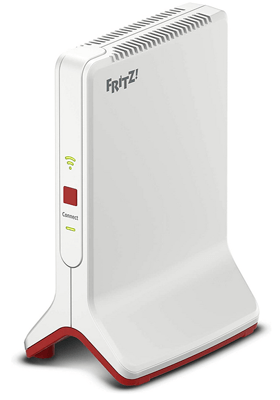

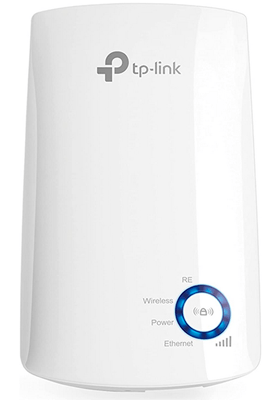
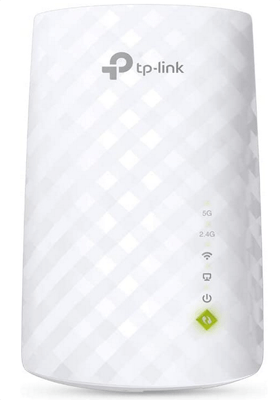



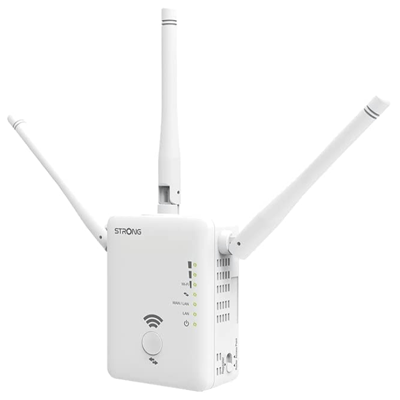
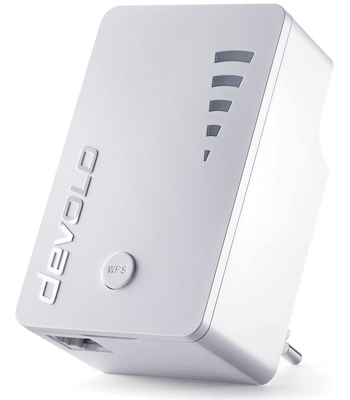

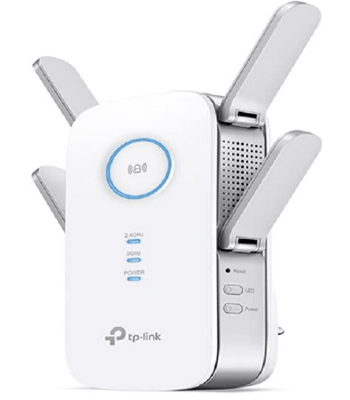
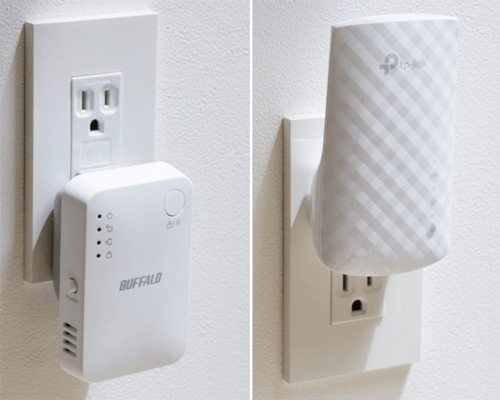




Post a Comment for "11 Best WiFi Repeaters More Perfect Signal"